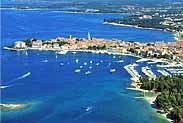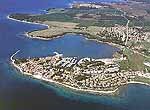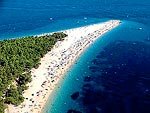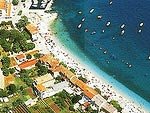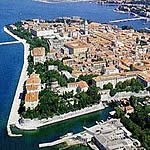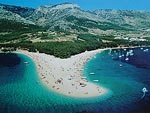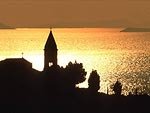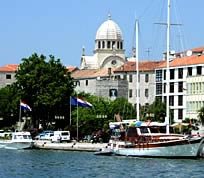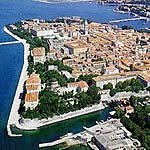Southern
 Dalmatia is the smallest and the most southern part of Croatia. This region does not have a natural backdrop like the rest of Dalmatia. Its backdrop is the border with Bosnia and Hercegovina which also has access to the sea by way of the town of Neum and their coastline is 9km long.Southern Dalmatia includes the area south of the Neretva river, the Peljesac peninsula and the Dubrovnik which borders with Montenegro in the inlet of Boka Kotorska. The city of Dubrovnik is the main center of the Dubrovnik – Neretva county as well as the main tourist center of Southern Dalmatia and Croatia. Dubrovnik is a city f
Dalmatia is the smallest and the most southern part of Croatia. This region does not have a natural backdrop like the rest of Dalmatia. Its backdrop is the border with Bosnia and Hercegovina which also has access to the sea by way of the town of Neum and their coastline is 9km long.Southern Dalmatia includes the area south of the Neretva river, the Peljesac peninsula and the Dubrovnik which borders with Montenegro in the inlet of Boka Kotorska. The city of Dubrovnik is the main center of the Dubrovnik – Neretva county as well as the main tourist center of Southern Dalmatia and Croatia. Dubrovnik is a city f ull of history and cultural heritage and lies under the protection of UNESCO. Its beautiful natural surroundings, preserved cultural and historical architecture, ecological standards and tourist industry have made Dubrovnik one of the most visited cities on the Adriatic Sea.The Old Town of Dubrovnik is surrounded by a monumental wall which is 1940 m long and 25 m high. The oldest and most well-known street within the old town is Stradun.
ull of history and cultural heritage and lies under the protection of UNESCO. Its beautiful natural surroundings, preserved cultural and historical architecture, ecological standards and tourist industry have made Dubrovnik one of the most visited cities on the Adriatic Sea.The Old Town of Dubrovnik is surrounded by a monumental wall which is 1940 m long and 25 m high. The oldest and most well-known street within the old town is Stradun.Cavtat is located around 20 km south of Dubrovnik and is a well-known tourist
 destination and offers a wide variety of accomodations such as room and appartments in private homes and villas, pansions, campsites and hotels. townspeople are known for their fishing expertise.The Peljesac peninsula, along with Istria, is the largest peninsula on the Adriatic coast. Its inhabitants occupy themselves with wine-growing (producing Dingac), shell ranching and fishing, as well as tourism. The larger towns on the peninsula are Orebic, Trpanj, Ston, and Kuciste.
destination and offers a wide variety of accomodations such as room and appartments in private homes and villas, pansions, campsites and hotels. townspeople are known for their fishing expertise.The Peljesac peninsula, along with Istria, is the largest peninsula on the Adriatic coast. Its inhabitants occupy themselves with wine-growing (producing Dingac), shell ranching and fishing, as well as tourism. The larger towns on the peninsula are Orebic, Trpanj, Ston, and Kuciste.The island of Mljet is one of the islands with the most vegetation and one third of the island was declared as the National Park of Mljet. It was declared a national park because of its exceptional natural beauty, richness in fauna and flora, beaches, fishing grounds.The Elafit islands lie just west of Dubrovnik and are part of the Dubrovnik archipelage. The Elafiti (greek for: stag islands) are closely tied to Dubrovnik and its history.
KORCULA is a town and port on the north-eastern coast of the island of Korčula, situated on a small peninsula which is connected with the island by a narrow isthmus. Visitor opportunities of the island of Korčula include va
 rious types of accommodation - hotels, apartments, campsites, marina; sports and recreational facilities, especially interesting are water sports; organized excursions and a rich cultural life and entertainment programs. The most important cultural event is the traditional chivalrous game called "Moreška". It has been performed in Korcula since the 15th century and is of Spanish origin.
rious types of accommodation - hotels, apartments, campsites, marina; sports and recreational facilities, especially interesting are water sports; organized excursions and a rich cultural life and entertainment programs. The most important cultural event is the traditional chivalrous game called "Moreška". It has been performed in Korcula since the 15th century and is of Spanish origin.LASTOVO a small town above the northern coast in the north-eastern part of the island of Lastovo. Lastovo is an ideal place for peaceful vacations, far from the usual crowd of tourists. Especially attractive are excursions by boat to the islands and islets of the Lastovo archipelago, with bathing and fish picnic opportunities. The island of Saplun is famous for its beautiful sand beaches.
PLOCE is a town and port on the coast of the Neretva Channel, 5 km north of the Neretva Delta; population 6,332. Economy is based on farming, fishing in the Neretva Delta; production of asbestos-textile goods, production of fancy goods and synthetic packaging; terminals for liquids and wood. The nearby mouth of the Neretva and the freshwater Bacina Lakes are a challenge to sports fishing enthusiasts. The Neretva valley provides also hunting opportunities. Gastronomic specialities include Neretva-style fish stew ("brudet") and grilled eels.
CAVTAT is a town and port in the southern part of the Zupa Bay, 20 km southeast of Dubrovnik Major tourist attractions include a very pleasant climate, luxuriant vegetation and nice shores. Economy is based on tourism, while chief occupations in the surroundings of Cavtat include farming and fishing. . Apart from various forms of accommodation - hotels, boarding houses, apartments, intensive exploitation of economic resources of the hinterland.
DUBROVNIK is a town, port and tourist centre of the southern Croatian coast;
 population. It lies at the foot of the limestone Srđ Mount , in a valley enclosed to the south-west by the Lapad plateau and a smaller reef with the oldest part of Dubrovnik. Apart from its outstanding natural beauties and well-preserved cul-tural and historical heritage, Dubrovnik also offers high-quality visitor opportunities. It is also the city of hotels, of high ecological standards and tourist programs, and is equally attractive in all seasons. A great number of Dubrovnik restaurants and taverns offer delicious specialities of local and international cuisine. Sports and recreational facilities include playgrounds, courts and requisites for all sports in the sea and on the ground, from tennis and table tennis to sailing and yachting. There are also several gyms and fitness centres with swimming pools, saunas, massage, aerobics, solarium, box gym.
population. It lies at the foot of the limestone Srđ Mount , in a valley enclosed to the south-west by the Lapad plateau and a smaller reef with the oldest part of Dubrovnik. Apart from its outstanding natural beauties and well-preserved cul-tural and historical heritage, Dubrovnik also offers high-quality visitor opportunities. It is also the city of hotels, of high ecological standards and tourist programs, and is equally attractive in all seasons. A great number of Dubrovnik restaurants and taverns offer delicious specialities of local and international cuisine. Sports and recreational facilities include playgrounds, courts and requisites for all sports in the sea and on the ground, from tennis and table tennis to sailing and yachting. There are also several gyms and fitness centres with swimming pools, saunas, massage, aerobics, solarium, box gym.KLEK is a
 village on the north-western coast of the bay of Klek - Neum, 12 km south of Opuzen. Klek is an ideal place for peaceful and pleasant vacations. Apart from bathing and water sports, visitors may enjoy other recreational activities at four tennis courts and miniature golf facilities. In the vicinity are also the villages of Duboka and Komarna with beautiful beaches.
village on the north-western coast of the bay of Klek - Neum, 12 km south of Opuzen. Klek is an ideal place for peaceful and pleasant vacations. Apart from bathing and water sports, visitors may enjoy other recreational activities at four tennis courts and miniature golf facilities. In the vicinity are also the villages of Duboka and Komarna with beautiful beaches.



















